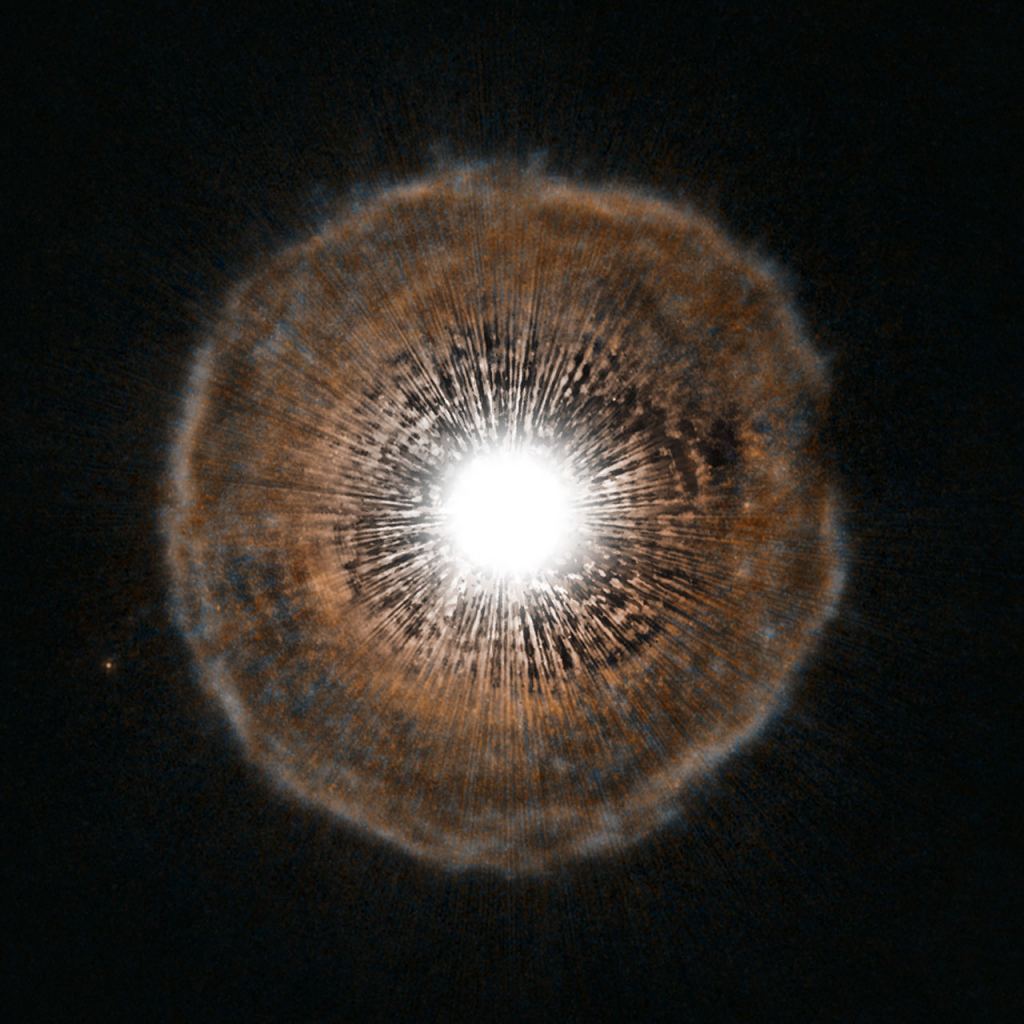There's a little galaxy in the Milky Way's cosmic neighborhood called Leo 1. It's a dwarf spheroidal that lies less than a million light-years away from us. Surprisingly, it has a supermassive black hole about the same mass as Sagittarius A* in our galaxy. That's unusual in several ways, and astronomers want to know more about it.
The name of the central supermassive black hole is Leo 1*. The galaxy itself is hard to observe, due to its proximity to the bright star Regulus. Leo 1* is challenging to spot, too. It's just not bright, even though it is gobbling up material to stay alive. So, astronomers at the Center for Astrophysics | Harvard & Smithsonian, are developing a method to study it and figure out how this monster supermassive black hole could exist in such a small galaxy.
"Black holes are very elusive objects, and sometimes they enjoy playing hide-and-seek with us," said Fabio Pacucci, lead author of a study published this week. "Rays of light cannot escape their event horizons, but the environment around them can be extremely bright — if enough material falls into their gravitational well. But if a black hole is not accreting mass, instead, it emits no light and becomes impossible to find with our telescopes."
Leo 1 and its Black Hole
This galaxy's supermassive black hole's existence was suggested in 2021 by astronomers who noticed that stars at the heart of Leo 1 were speeding up as they approached. That's pretty good evidence for a black hole. However, imaging the emissions from any material spiraling into the black hole was impossible. And thus, Leo 1's black hole remained tantalizingly out of reach.
What makes this supermassive black hole in a dwarf spheroidal such a challenge to understand? Let's look at its home. Leo 1 is a very "low metal" galaxy, like many other dwarf spheroidals. It has stars, to be sure, but not a lot of gas. Until recently astronomers didn't think these types of galaxies had central supermassive black holes. That's because these monsters accrete and grow by feeding on gas and other material that wanders too close. A metal-poor, gas-poor galaxy just doesn't seem like the right environment for a behemoth like Leo 1 seems to have.
Leo 1 is also a fairly young galaxy. It last went through a star-forming epoch that began some 6 billion years ago and ended about a billion years ago. Star formation gobbles up a lot of gas. In addition, since this galaxy orbits the Milky Way, a close passage may have stripped more gas away. That would have also slowed the star formation rate and robbed the black hole of the fuel it needs. So, that leaves a lot of questions, first among them, if there is a 3-million-solar-mass black hole in Leo 1, how did it get so big? Clearly, it grew from something, and it's still growing, albeit slowly. Also, since it's not hugely bright with emissions, how can it be observed?
Observing the Leo 1* Supermassive Black Hole
Pacucci and his research partner, Avi Loeb, suggest using red giant stars as tracers to track the supermassive black hole's activity. "In our study, we suggested that a small amount of mass lost from stars wandering around the black hole could provide the accretion rate needed to observe it," Pacucci explained. "Old stars become very big and red — we call them red giant stars. Red giants typically have strong winds that carry a fraction of their mass to the environment. The space around Leo I* seems to contain enough of these ancient stars to make it observable."
It's an interesting methodology that should allow them to gain more information about the black hole and its environment. It also raises more questions about this supermassive black hole's very existence. "Observing Leo I* could be groundbreaking," said Loeb, the co-author of the study. "It would be the second-closest supermassive black hole after the one at the center of our galaxy, with a very similar mass but hosted by a galaxy that is a thousand times less massive than the Milky Way. This fact challenges everything we know about how galaxies and their central supermassive black holes co-evolve. How did such an oversized baby end up being born from a slim parent?"
Most galaxies host central supermassive black holes that are a small percent of their total mass. That's true of the Milky Way. But, Leo 1* breaks the mold. "In the case of Leo I," Loeb said, "we would expect a much smaller black hole. Instead, Leo I appears to contain a black hole a few million times the mass of the Sun, similar to that hosted by the Milky Way. This is exciting because science usually advances the most when the unexpected happens."
Using Radio Telescopes to Probe Leo 1*
While there's no way to image Leo 1* in visible light, it turns out radio observatories can focus on it. The team has already observed it using the Chandra X-ray Observatory, the Karl Jansky Very Large Array, and the Atacama Large Millimeter Array. Those observations should confirm the existence of the black hole and give some idea of its accretion rate.
Astrophysicists Hunt for Second-Closest Supermassive Black Hole
Accretion from Winds of Red Giant Branch Stars May Reveal the Supermassive Black Hole in Leo I
Dynamical Analysis Of The Dark Matter And Central Black Hole Mass In The Dwarf Spheroidal Leo I (links to PDF)
https://arxiv.org/pdf/2111.04770.pdf
 Universe Today
Universe Today

